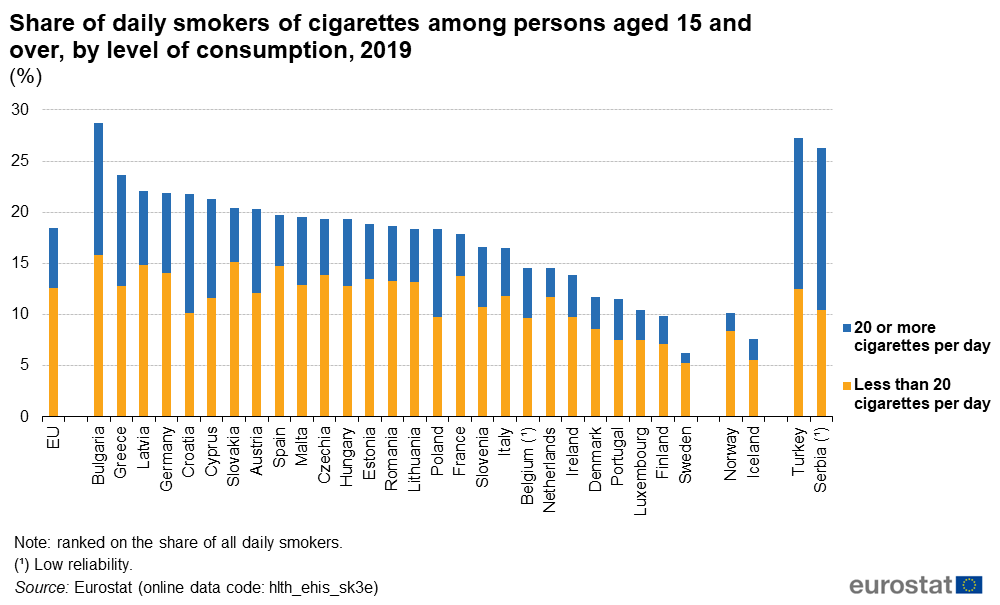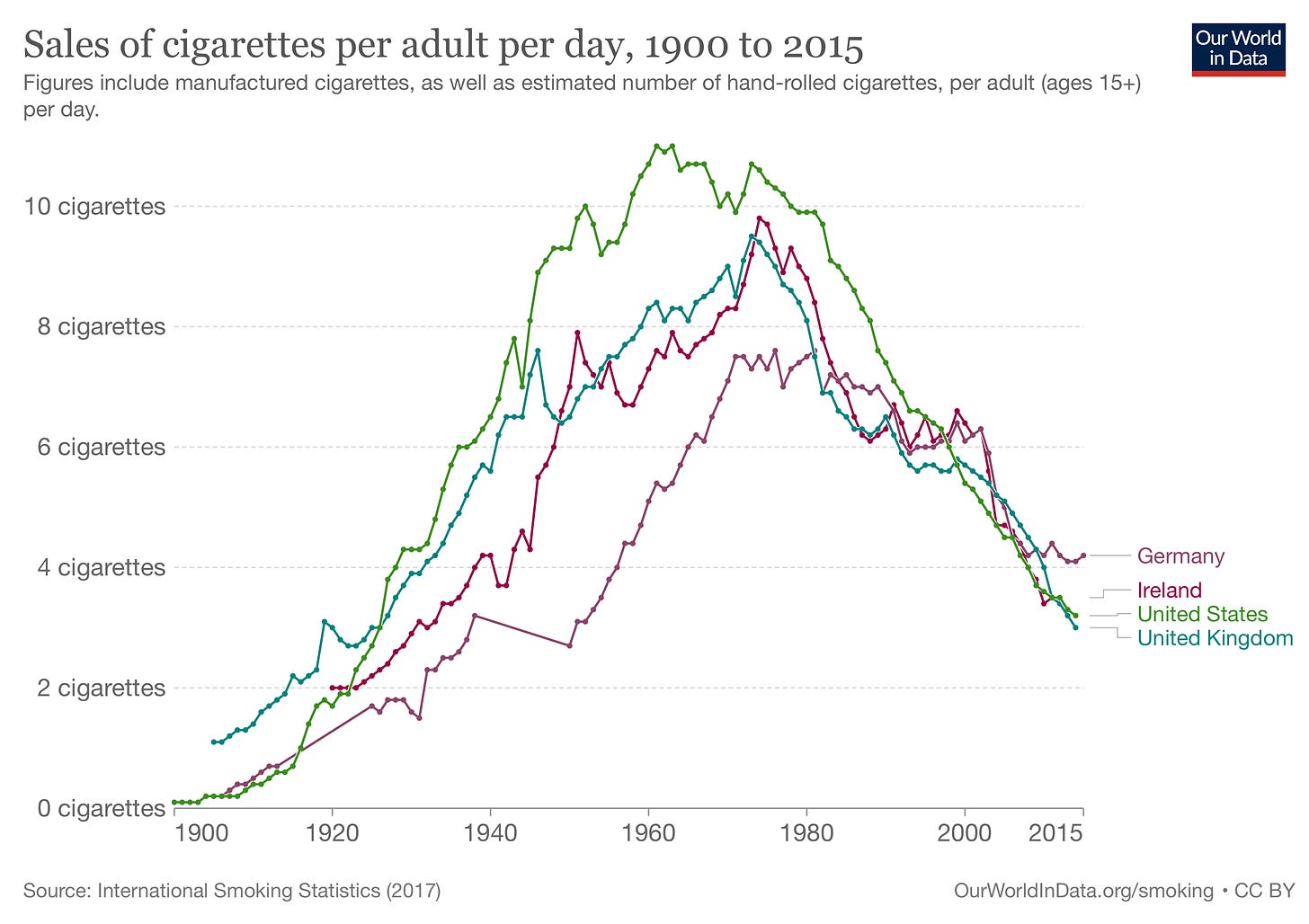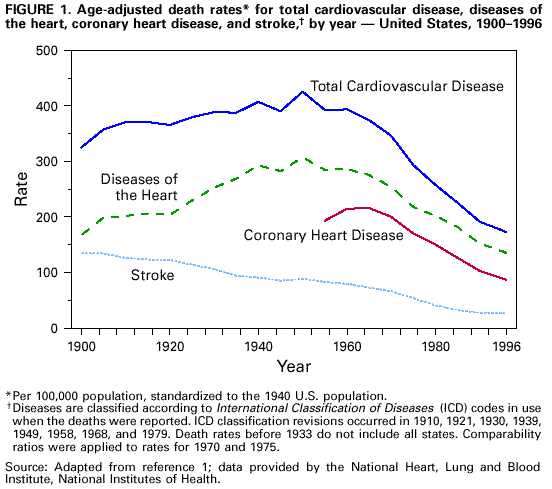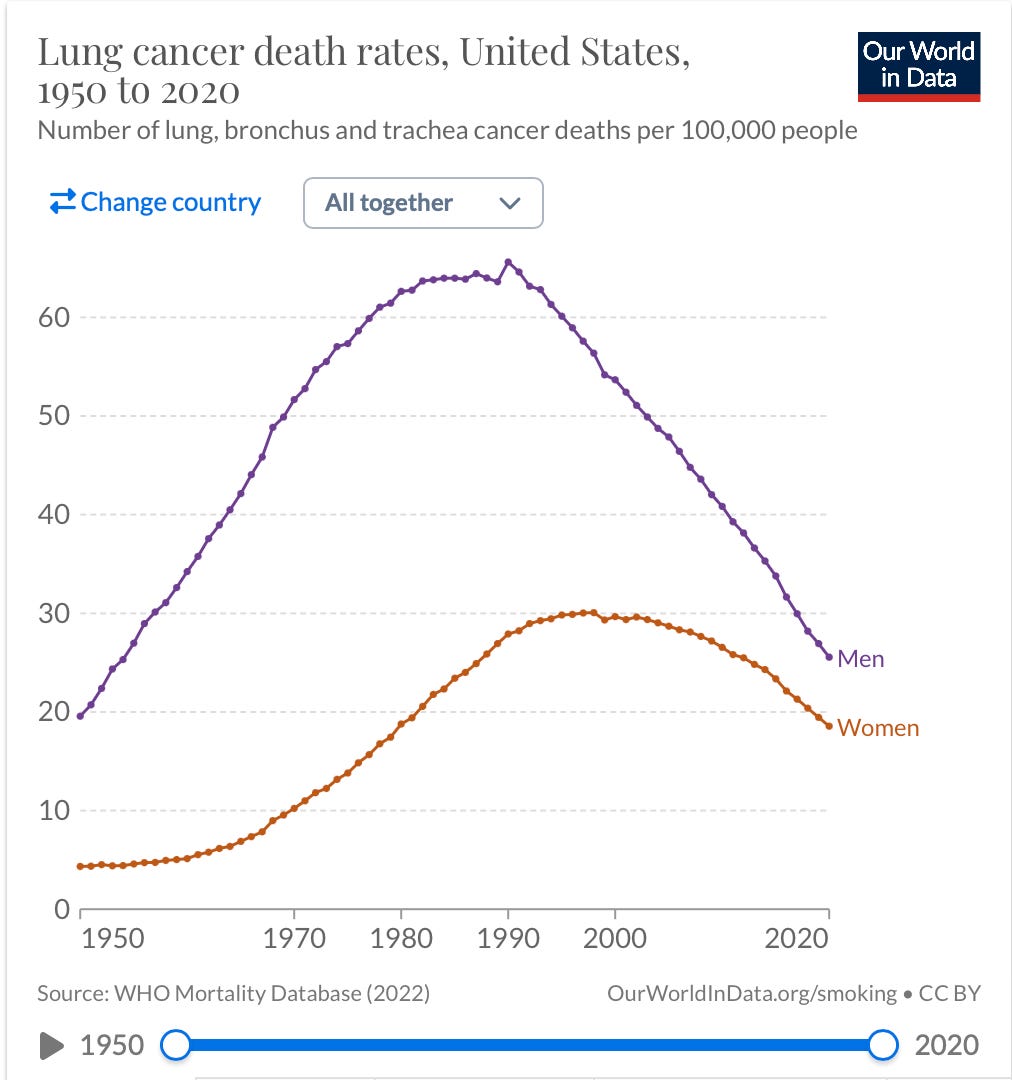Why Smoking Is Still A Major Driver Of Cardiovascular Risk

“Cigarettes are the only legal consumer product that, when used as intended, will kill half of all long-term users.”
Dr Scott Gottlieb - FDA Commissioner
Undoubtedly we have made significant progress when it comes to the health impacts of smoking, but we still have a long way to go, and that progress might even be reversing.
As highlighted above, 1 in 2 regular smokers will die from a smoking-related lung disease.
Very few risk factors come with such high chances of that ‘risk’ translating into ‘harm’.
Currently, about 20% of adults still smoke.
However, for the long-term unemployed, that figure rises to over 50%1.
Smoking rates also vary considerably based on geography. Take Europe, for example.
In Sweden, just over 5% of adults smoke daily, but in countries such as Turkey, Serbia and Bulgaria, that figure rises to over 25% on average2.

Globally, smoking is estimated to be responsible for 8 million deaths annually, with over 1 million of those deaths being in non-smokers from the effects of passive smoking3.
After high blood pressure, it is the second leading cause of death worldwide.
And this is all after 50 years of significant progress.
While smoking rates remain unacceptably high, things were much worse in the 1970s when cigarette sales peaked at about three times the current averages.

Smoking & Cardiovascular Disease
Although the relationship between smoking and cardiovascular disease is certain, the reason for this connection is still not entirely clear4.
The most likely explanation is damage to the endothelial lining of the artery walls, thereby promoting the passage of atherogenic lipid particles and the development of atherosclerosis.
Smoking has also been shown to increase inflammation and promote clot formation, which would explain increases not only in the formation of atherosclerosis but also in plaque ruptures and heart attacks.
On a cigarette-for-cigarette basis, females are more susceptible to the effects of smoking compared to males and, on average, have higher rates of cardiovascular disease and cardiovascular death as a result of smoking.
An explanation for this differential impact may be connected to differences in thrombin signalling which might explain the higher rates of clot formation and complications from a heart attack.
The impact of smoking on cardiovascular health extends beyond coronary artery disease, and higher rates of stroke, aortic aneurysm, peripheral vascular disease, and erectile dysfunction have been well documented.
Trends Over Time
Rates of cardiovascular disease, although still the leading cause of death worldwide, have improved dramatically over the last 50 years. This dramatic decline in cardiovascular disease is no doubt multifactorial in nature but largely can be attributed to declining smoking rates.

With the declining smoking rates from the early 1970s, there has been a parallel and dramatic reduction in cardiovascular disease.
Similar trends have also been noted for lung cancers which are also a well-known complication of smoking, with lung cancer death rates peaking approximately 20 years after smoking rates peaked.
This lag effect is explained by the time interval required for a cancer to develop. The reduction has been more delayed for females, possibly explained by females smoking more frequently in the latter half of the century.

What About Vaping
The use of electronic cigarettes is undoubtedly safer than the use of standard tobacco-based cigarettes.
However, this does not mean they are safe.
Just less dangerous.
The same way that jumping off a 20-foot cliff is less dangerous than jumping off a 200-foot cliff. It’s all a matter of scale.
Recent studies have shown that regular electronic cigarette users are about 56% more likely to have a heart attack and 30% more likely to have a stroke compared to non users5.
Electronic cigarette use has also been shown to result in higher blood pressure, likely due to damage to endothelial function of the arteries. Regular users also had declines in their physical fitness metrics6.
Smoking Cessation
Stopping smoking, particularly at a young age, can reduce the excess mortality risk of smoking by approximately 90%7. Quitting regular cigarette use can add a decade to a person's life.
Stopping smoking at any age, however, is likely to be beneficial.
On average, it can take between 6 and 29 attempts to stop smoking8. This figure highlights two critical points:
-
Smoking cessation is very challenging, so take all the help you can get.
-
Even if you have failed to quit smoking multiple times, there is still a prospect of success.
Multiple therapies can assist with smoking cessation and have varying degrees of success:
-
Behavioural Therapy & Counselling
-
Nicotine Replacement Therapy
-
Varenicline (Champix) and Bupropion
A recent novel approach has been the psychedelic psilocybin which showed smoking cessation rates of 67% at 12 months. In addition to the potential smoking cessation benefits, 86% of those studied rated the experience as “among the five most personally meaningful and spiritually significant experiences of their lives.”9.
Come for the smoking cessation. Stay for the spiritual enlightenment!
The last 50 years have been a major public health success, with smoking rates declining rapidly and the diseases related to smoking declining also.
There is still a long way to go, but the hope is that smoking rates can be as close to zero as possible in the future.
And with those minimal smoking rates, we should hope to see even bigger gains in heart disease and smoking-related cancers.
We may not get to zero.
But I am hopeful we will make continued progress in the years ahead.
https://www.bhf.org.uk/what-we-do/news-from-the-bhf/news-archive/2013/september/smoking-habits#:~:text=Unemployed%20people%20were%20twice%20as,people%20and%20students%20(17%25).
https://ec.europa.eu/eurostat/statistics-explained/index.php?title=File:Share_of_daily_smokers_of_cigarettes_among_persons_aged_15_and_over,_by_level_of_consumption,_2019_(%25)_HLTH2022.png
https://ourworldindata.org/smoking
Cardiovascular risk of smoking and benefits of smoking cessation. J Thorac Dis. 2020 Jul;12(7):3866-3876.
IMPACT ON CARDIOVASCULAR OUTCOMES AMONG E-CIGARETTE USERS: A REVIEW FROM NATIONAL HEALTH INTERVIEW SURVEYS. J Am Coll Cardiol. 2019 Mar, 73 (9_Supplement_2) 11.
https://newsroom.heart.org/news/people-who-vape-had-worrisome-changes-in-cardiovascular-function-even-as-young-adults
Cardiovascular risk of smoking and benefits of smoking cessation. J Thorac Dis. 2020 Jul;12(7):3866-3876.
Estimating the number of quit attempts it takes to quit smoking successfully in a longitudinal cohort of smokers. BMJ Open. 2016 Jun 9;6(6):e011045.
Long-term follow-up of psilocybin-facilitated smoking cessation. Am J Drug Alcohol Abuse. 2017 Jan;43(1):55-60.




